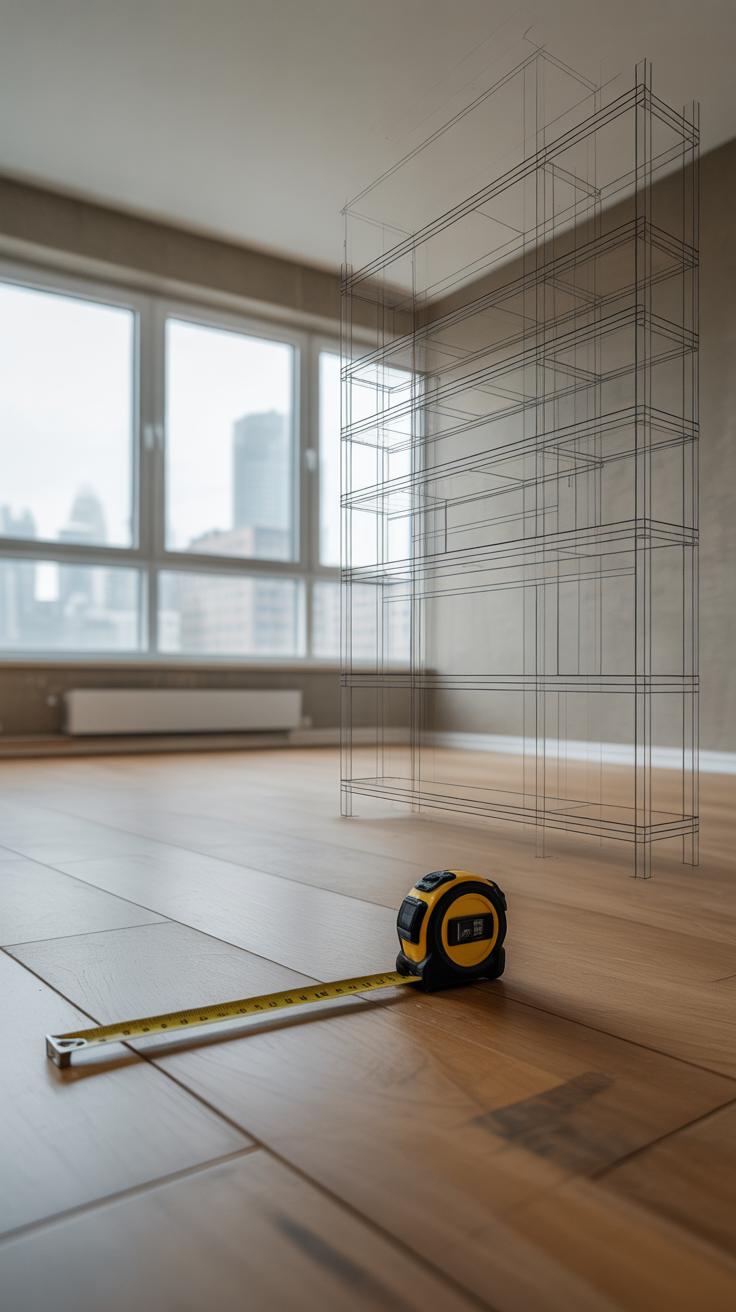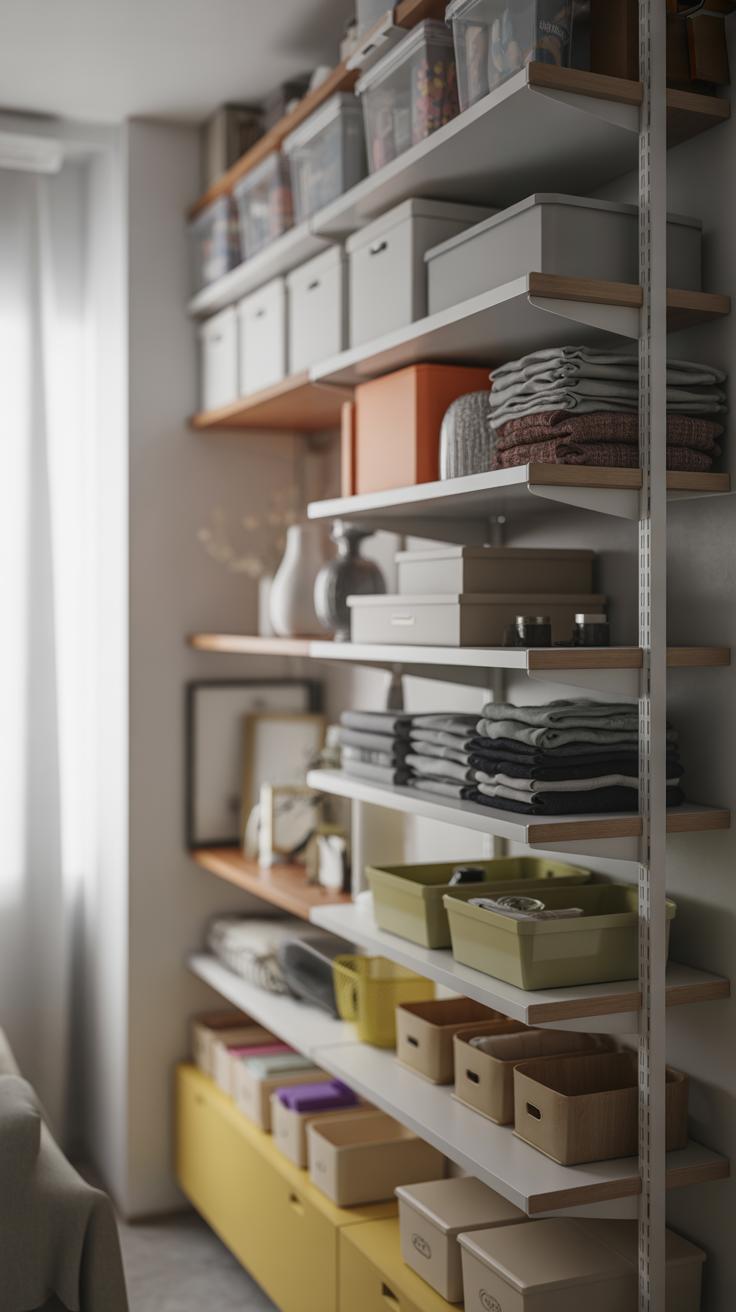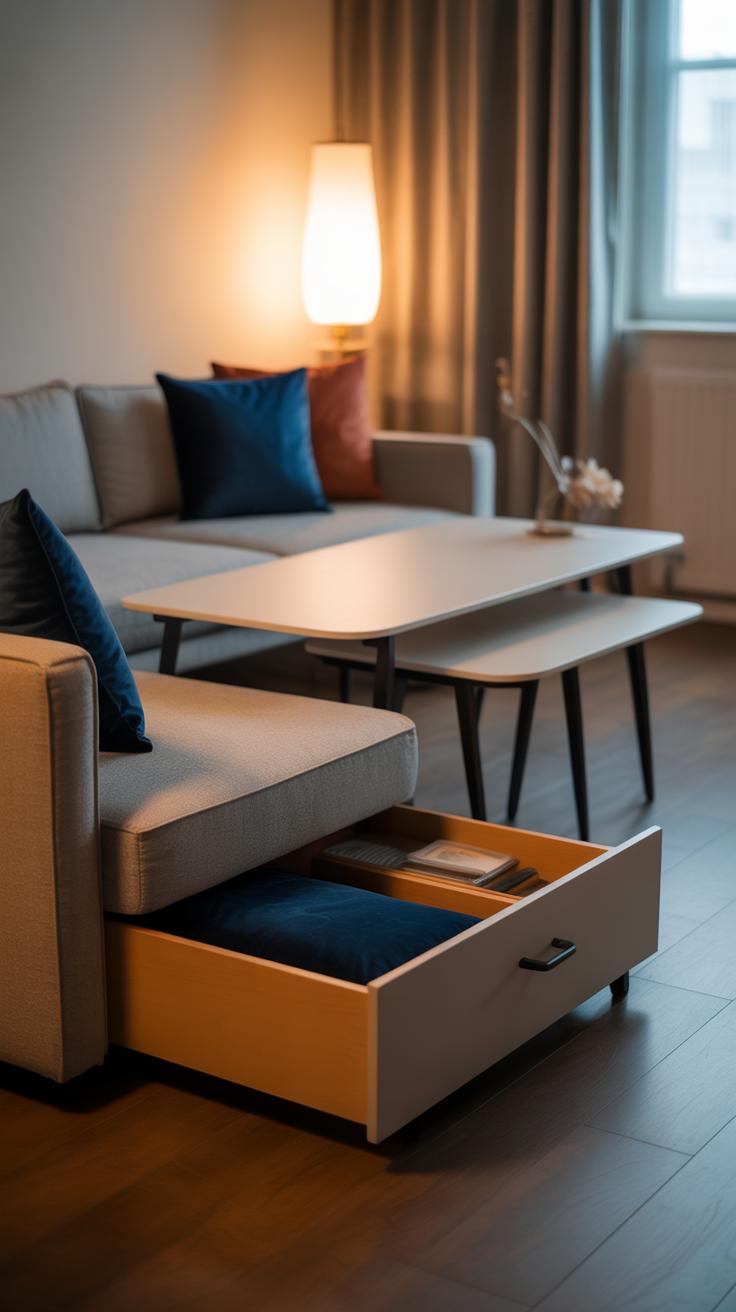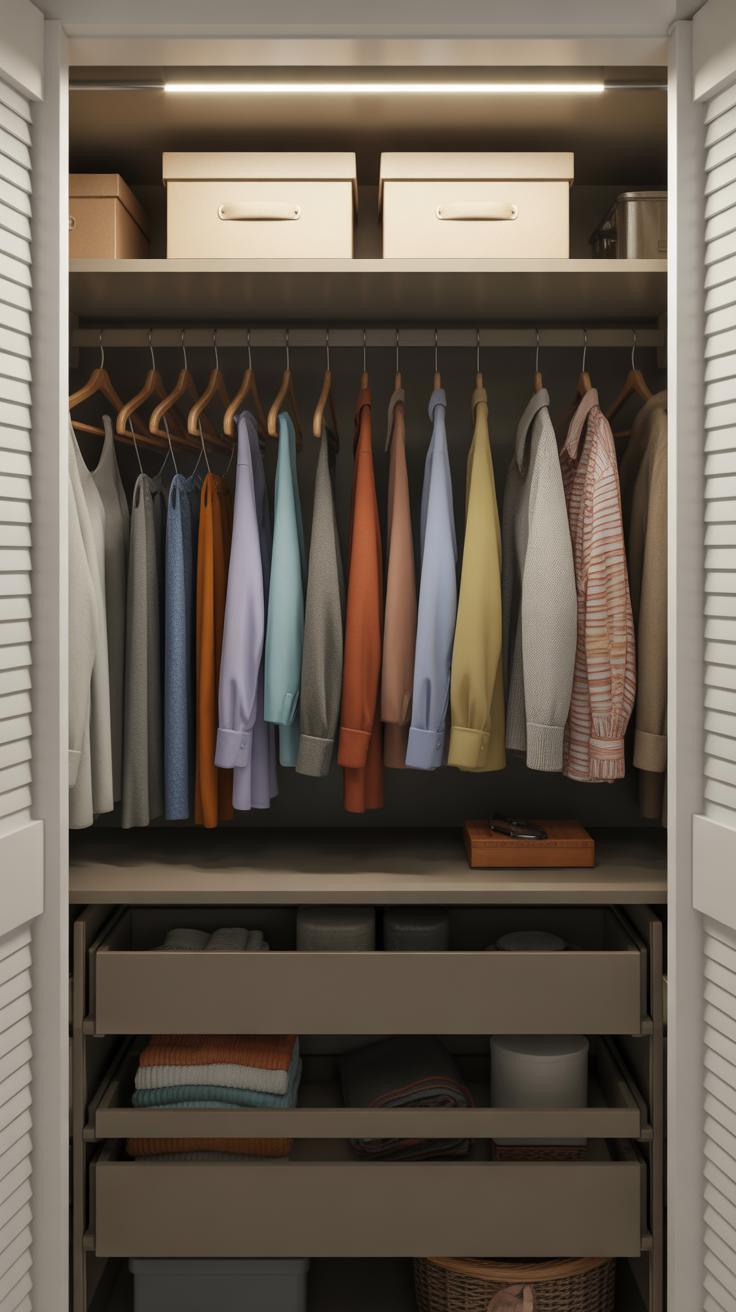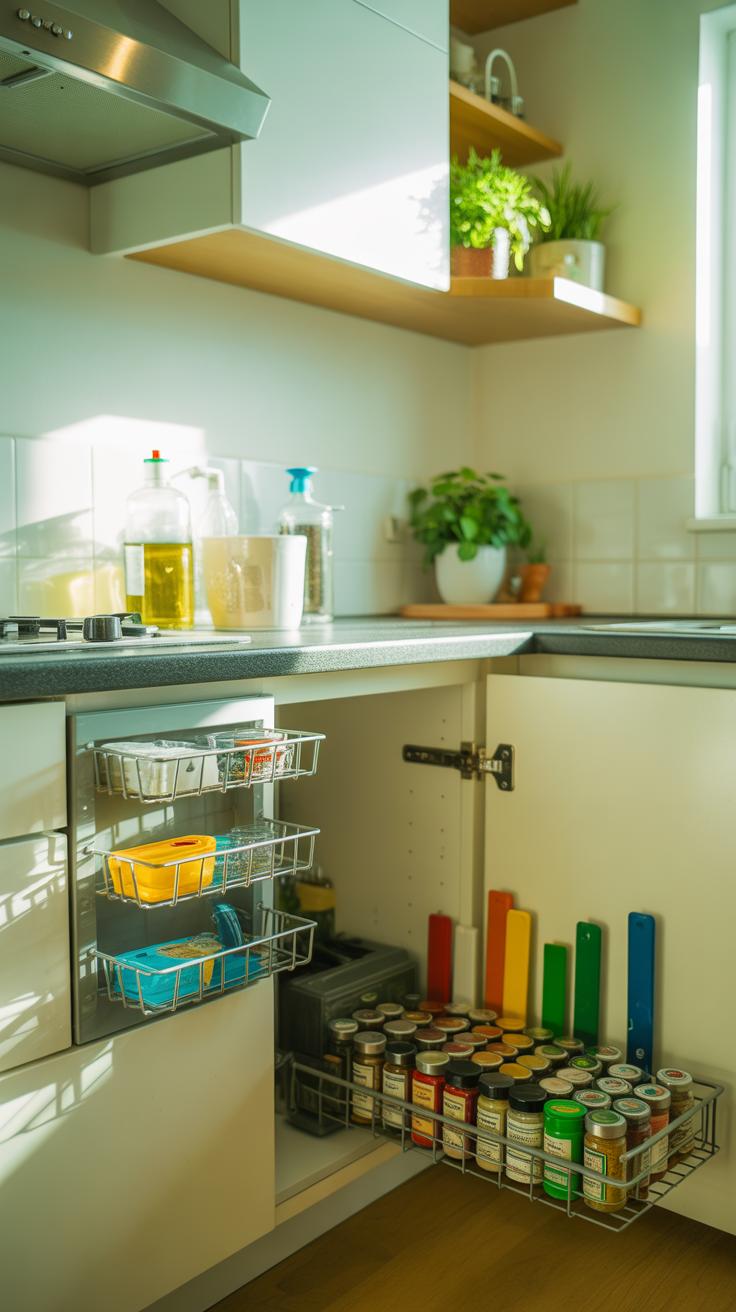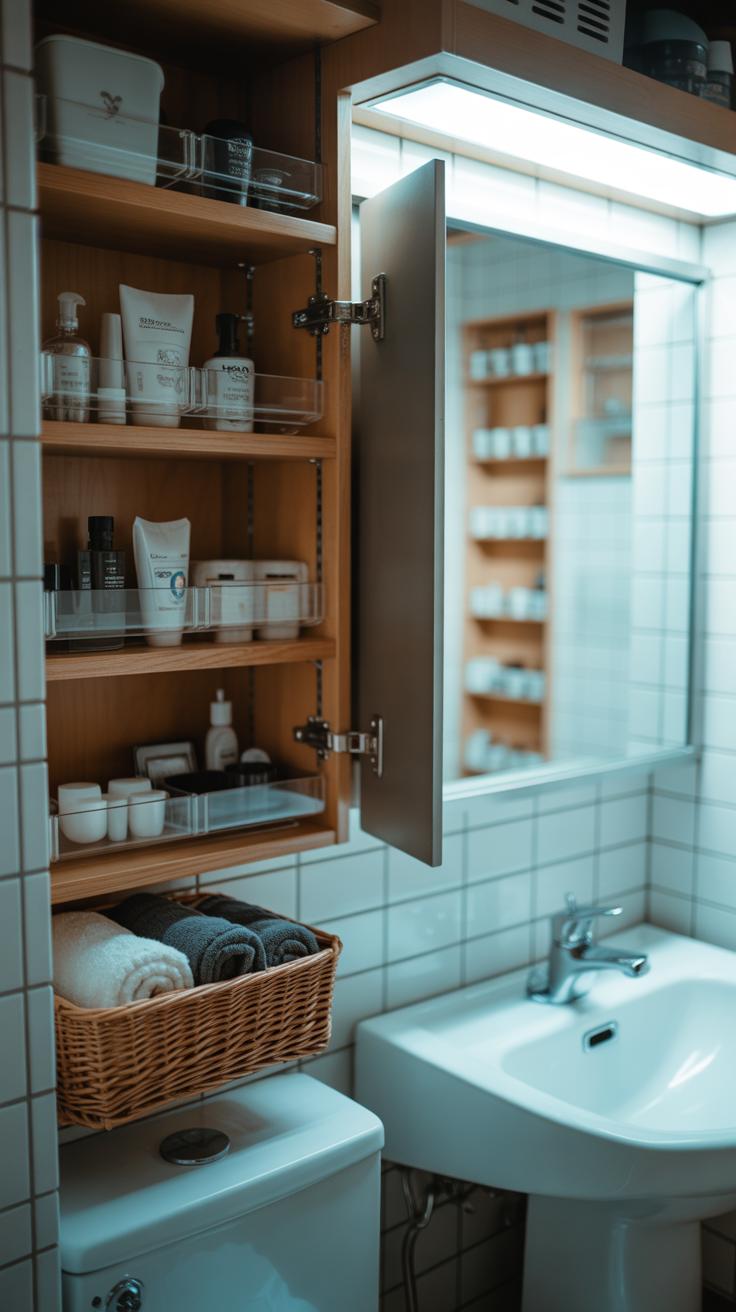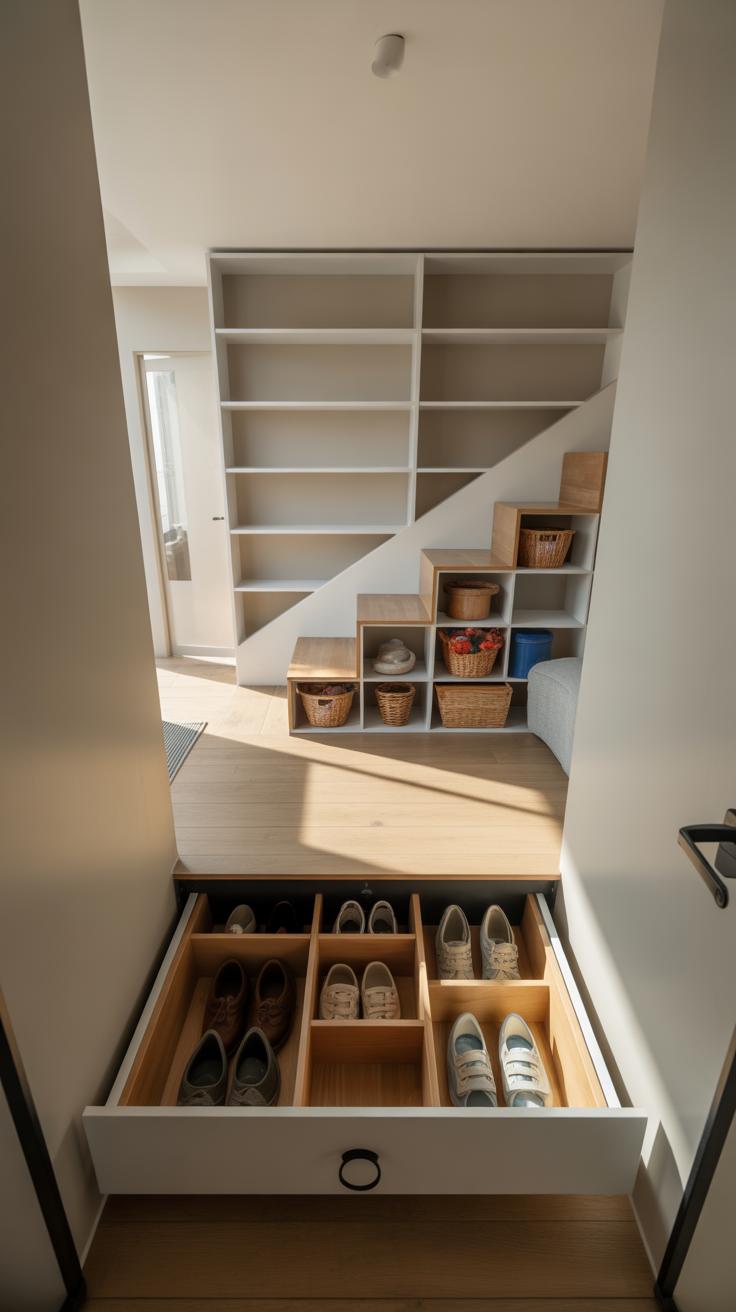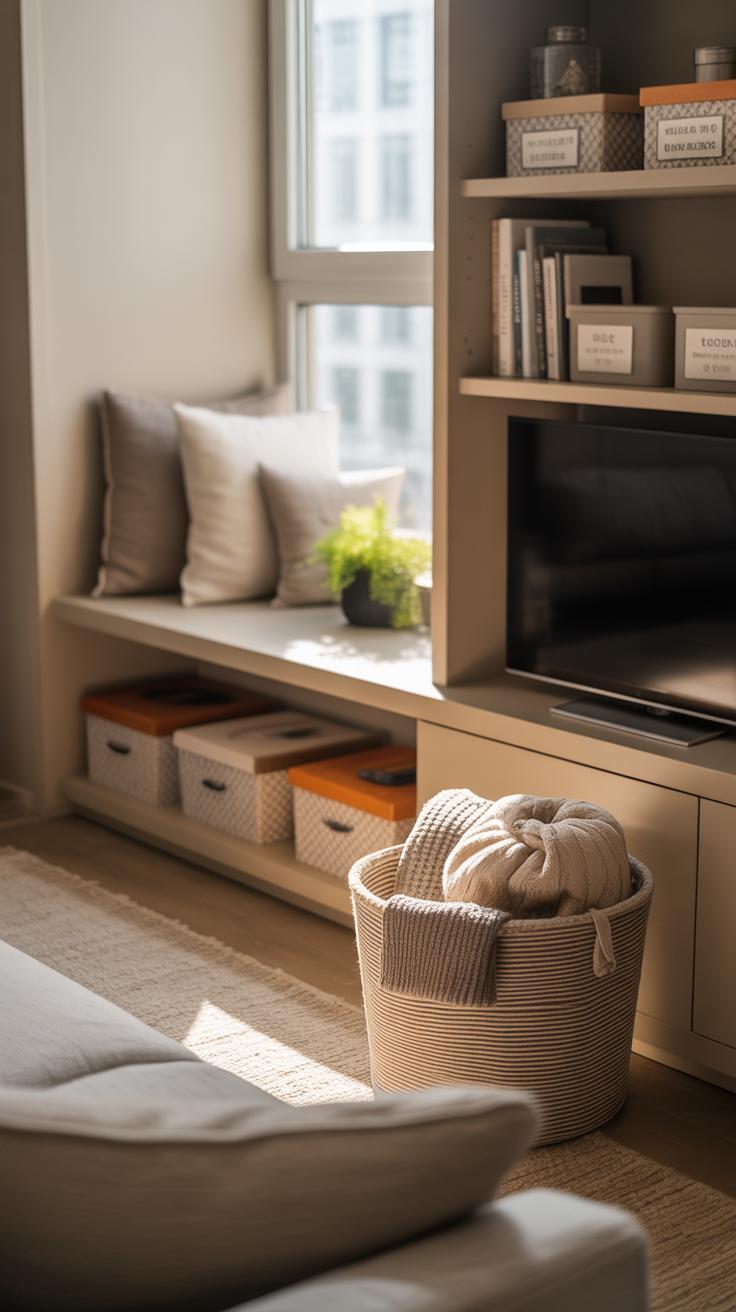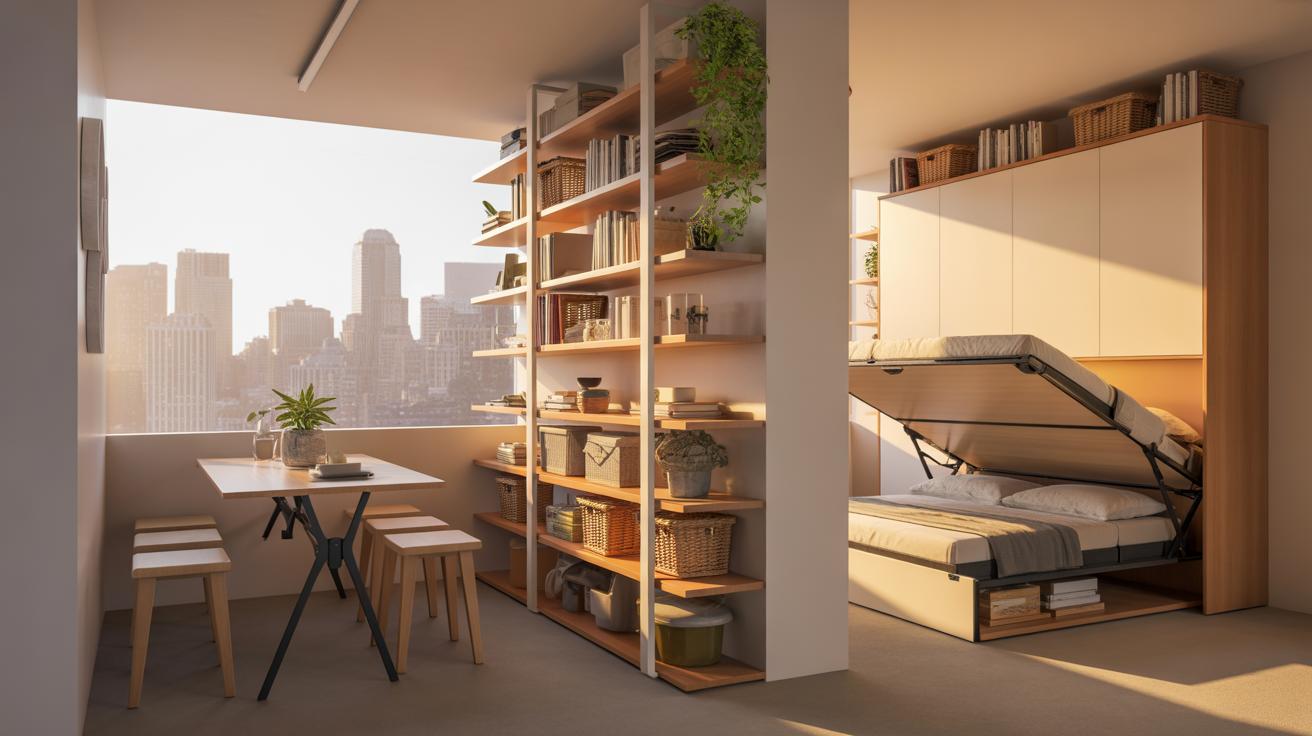
Essential Small Space Storage Ideas For Urban Apartments
Introduction
Living in an urban apartment often means dealing with limited space. Finding ways to store your belongings without cluttering your home can be a daily challenge. Essential small space storage ideas are key to making your living area functional and comfortable.
This article explores practical tips and creative solutions that fit small urban apartments. You will discover how to maximize your storage options and keep your home organized, no matter how tight your space is.
Understanding Your Space
Before you jump into buying storage bins or shelves, take a moment to really look at your apartment. Urban living spaces can be tricky—sometimes rooms feel bigger or smaller depending on the layout—and it’s easy to overlook tight spots or oddly shaped corners. If you don’t know exactly what space you have, your storage choices might end up wasted or awkwardly placed.
Measuring your apartment accurately is a good place to start, but don’t stop there. Sketching a basic floor plan helps visualize where furniture sits and where empty spots hide. Don’t forget less obvious places like under the bed, behind doors, or vertical corners near windows. These little areas might be your storage goldmine.
Think about what you need to store, too. Are you keeping bulky winter coats or mostly small electronics? How often do you reach for certain items? Grouping things by size and frequency can change your storage priorities quite a bit. For example, things you use daily should be easy to grab, while seasonal or seldom-used items can live in less accessible places. This step actually saves you from buying unnecessary containers or racks that don’t fit your real needs.
When I first moved into a small city flat, I underestimated the effort it took to map out storage spots. I bought a nice-looking shelf that didn’t fit where I hoped—and that could have been avoided by simply measuring first. So, yes, while this stage takes time, knowing your space and stuff upfront pays off in the end.
Using Vertical Space Wisely
Small apartments rarely offer generous floor space, so turning your attention upward feels like a smart first move. Vertical storage isn’t just about adding shelves; it changes how you see the room. When you stack storage vertically, you free up ground area for living or other functions, which often gets overlooked.
Think about installing tall bookcases or cabinets that reach closer to the ceiling. Even if some parts of the top shelves become less accessible, storing items you rarely use there still makes sense. It’s a bit like creating “zones” within your space – quick grab items at eye level, occasional-use items above.
Hooks can be surprisingly useful too. Why keep things crammed in drawers when you can hang bags, hats, or even kitchen utensils? Pegboards deserve a shout-out here. You can customize them, rearrange as needed, and they really open up opportunities for organization.
Installing Shelves and Racks
Installing shelves or racks isn’t always straightforward, but it’s often less daunting than it seems. Lightweight wooden shelves work well—avoid anything too heavy if you don’t want extra wall damage or if your apartment walls aren’t the strongest. Floating shelves above door frames catch a lot of people by surprise. I didn’t consider these until recently, but they’re hidden gems that make use of space you probably ignored.
Where you place shelves matters. Closer to eye level or just above furniture makes items easy to reach. Higher up is fine for storage boxes, rarely used cookbooks, or decorations. If drilling into walls isn’t an option, adhesive shelving can offer a temporary solution, though be careful about weight limits.
Hanging Storage Options
Hooks, pegboards, hanging organizers – these tools open up your vertical plane in dynamic ways. Kitchen utensils, jewelry, scarves, or even small potted plants can hang on properly designed hooks. Pegboards are especially flexible, letting you move hooks and baskets as your needs shift. Think of them as a canvas for your storage needs.
In tight kitchens, hanging racks for pots or mugs free up precious countertop and cabinet space. Similarly, behind doors or inside closets, hanging organizers can keep shoes or cleaning supplies off the floor. The key is to try different configurations to discover what fits your flow; sometimes what works for one person feels cluttered to another, so it might take a couple of tweaks.
MultiPurpose Furniture
When space is tight, furniture that serves more than one role quickly becomes your best friend. Think beyond just a chair or a table. Pieces that combine storage with everyday use can free up precious room without making things feel cramped or cluttered. It’s not always obvious at first glance, but a well-chosen item can hide away everything from extra blankets to books and even your seasonal clothes. Sometimes, these pieces surprise you with their capacity, proving that small apartments don’t have to mean sacrificing storage.
Beds with Storage Drawers
Beds with built-in drawers or compartments are more common than you might realize, and for good reason. They make use of the large footprint your bed takes up. Sliding drawers underneath can hold clothes, shoes, or linens, keeping them out of sight but easy to reach. Some models have lift-up platforms, revealing a spacious compartment beneath the mattress—perfect for bulky items. I once swapped a plain bed for one with storage drawers, and it instantly removed the need for an extra dresser. It’s worth considering whether you want shallow drawers for everyday things or deeper compartments for less-used items. You might be surprised how much those under-bed spaces can hold and how much floor area you save by not adding standalone storage units.
Ottomans and Coffee Tables
A lot of people overlook ottomans and coffee tables as storage options, but they’re fantastic for hiding away clutter. A coffee table with a removable top or a lift lid can store magazines, remote controls, or small blankets. Ottomans, meanwhile, often open up to reveal surprisingly large storage spaces inside. They double as extra seating or a footrest, so you don’t have to dedicate spots just for storage. I remember having an ottoman in my living room that swallowed up a mountain of kids’ toys during visits—no one even noticed. Choosing these pieces lets you keep essential items close without crowding your apartment. Plus, if you pick styles with clean lines, they blend seamlessly with your décor. Wouldn’t it be nice to sit down and kick off your shoes with everything tidied away under your feet?
Organizing Closets and Cabinets
Using Shelving and Bins
Closets often have dead space, especially higher up or toward the back. Installing extra shelving can break up that volume, making room for more items without feeling cluttered. You might think more shelves just mean more stuff piled up, but when combined with labeled bins, it helps keep things tidy and easy to find.
Clear or fabric bins that fit snugly on shelves keep smaller items contained—think scarves, gloves, or odd socks. Labeling these bins is crucial; otherwise, you might spend more time rummaging than you save. I found that even simple sticky labels helped me avoid double-buying things because I forgot what I already had stashed away.
Stacking bins should fit the height between shelves closely to avoid wasted space. Adjustable shelves offer flexibility as your storage needs change, although not all closets support them. Sometimes, bringing in modular shelving units inside a cabinet makes a noticeable difference. It might feel like extra work upfront, but the payoff is worth it.
Closet Rods and Hanging Solutions
Adding a second closet rod can almost double your hanging space—especially if your closet is tall but sparingly used vertically. The trick is spacing: leave enough room between rods so clothes don’t get crushed. Some clever tension rods or inexpensive kits can be installed without tools, which is a relief if you’re renting.
Besides rods, hanging fabric organizers or hooks can expand storage for accessories or shoes. I once added a hanging shelf organizer for sweaters I don’t reach for often, freeing up drawer space elsewhere. Hanging solutions aren’t just for clothes—they work for things like belts or bags, too.
One caveat is not to overload these hanging additions. When the closet gets too heavy, it becomes difficult to maintain order. Still, taking that extra step to customize hanging space often results in finding long-lost garments you completely forgot about. Have you ever rediscovered something buried deep in a chaotic closet? The point is, these tweaks invite better order and can change how you interact with your wardrobe—or at least shrink morning frustration a bit.
Creative Storage in the Kitchen
Small kitchens in urban apartments can feel cramped fast, but there are ways to stretch every inch. One trick I’ve found handy is using wall-mounted racks. These let you hang pots and pans right where you can grab them, freeing up cabinet space below. It might seem odd at first to have your cookware on display, but it’s practical—and honestly, it can look quite homey.
Magnetic strips are another clever option, especially for knives and metal utensils. Sticking these on your wall keeps your tools within easy reach and clears out those crowded drawers. You might worry about safety, but a simple strip mounted just right makes things accessible without risking accidents.
Inside drawers, stackable containers help a lot. They keep small items separated, which makes finding lids or seasoning packets less frustrating. Drawer organizers—which come in all shapes—can divide utensils from gadgets, so nothing gets buried or tangled.
Imagine opening your drawer and actually seeing everything at once—that’s a rare feeling in small kitchens. Keeping containers stackable saves vertical space, and drawer dividers stop things from sliding. You could even label containers. It sounds a bit much, but when you’re in a rush, those small cues help.
Have you ever thought about what’s just out of sight in your kitchen now? Perhaps some items could go on those racks or inside a neatly divided drawer instead of crowding the countertop or cabinets. It takes some trial, sure. But once you get the hang of it, cooking in a cramped kitchen starts to feel less like a hassle and more manageable.
Bathroom Storage Solutions
Small urban bathrooms often feel cramped, right? But there are ways to add storage without cluttering the space. One idea that works quite well is over-the-toilet shelving. These units snugly fit above the toilet tank, turning dead vertical space into a spot for towels, extra toilet paper, or even small decorative baskets. It’s not always the first place people think of, but when you try it, you realize how much it frees up cabinet or counter area. Some shelving comes with closed cabinets or open racks, so you can decide if you want everything visible or tucked away.
Besides shelving, shower caddies also help keep things organized. Hanging caddies that attach to the showerhead or suction to the wall can hold shampoo, soap, razors—whatever you usually just leave on the floor or edges. You can grab what you need quickly without the mess. Likewise, wall hooks become surprisingly handy. They don’t take up floor space but give you a place for towels, robes, or loofahs. You might even put hooks inside cabinet doors if those are an option. It’s a small thing, but it often makes towels air out better and keeps them from piling up.
Would you have thought about vertical and wall storage as key bathroom helpers? Maybe next time you squeeze things in tight, these little solutions might make the space feel less… suffocating.
Maximizing UnderUtilized Areas
Under Bed Storage Bins
Under the bed is often one of those forgotten spaces. Yet, it offers a surprising amount of storage if you approach it right. Choosing low-profile bins or drawers that slide easily lets you stash away things like off-season clothes, extra linens, or shoes. You want containers that fit snugly without needing to shift the bed or struggle to grab what’s inside.
Plastic bins with clear sides work well so you can see what’s inside without digging around. Some people prefer fabric drawers with handles for easier access. It depends on your style and how often you need to reach in. I once stashed holiday decorations there, which kept them out of sight for months.
Try to keep what you store under the bed limited to lighter, less frequently used items. The space isn’t perfect for heavy boxes or things you need daily. Also, think about how much clearance your bed has—some beds sit too low for anything useful underneath.
Corner Shelving and Furniture
Corners can feel awkward, almost wasted, but they don’t have to be. Installing corner shelves can turn those tight angles into surprisingly helpful storage spots without making the room feel crowded. Floating shelves or small bookcases designed for corners fit in places standard furniture can’t.
If you’re thinking beyond shelves, corner furniture like an angled desk, a triangular filing cabinet, or an L-shaped sofa can add storage or seating without filling up precious floor space. These pieces use the corners smartly, freeing up the center where you move most.
Sometimes, less is more—filling every corner might clutter the room visually. Finding a balance depends on your layout and needs. Have you tested adding a corner piece and regretted it? It can happen if you’re not careful about scale and function.
Maintaining Your Small Space Storage
Keeping your small space storage organized over time takes more than just clever setups. It calls for habits that prevent clutter from creeping back in. You might find that even the best storage ideas start to feel overwhelming if you don’t regularly step back and reassess what you really need to keep.
Try setting a schedule for decluttering—maybe once a month or every few weeks, depending on how fast things pile up. During these checks, ask yourself if particular items still deserve that precious storage spot or if they could be donated or tossed. It’s easy to rationalize holding onto “just in case” stuff, but be honest with yourself here.
Labeling containers isn’t just about aesthetics. When you clearly mark what’s inside boxes, bins, or drawers, you save time digging around and reduce the chance of misplacing things. Grouping similar items together also helps keep the system consistent. For instance, keeping all cleaning supplies in one container, and all office materials in another, creates mental clarity when you need something quickly.
One challenge you might face is feeling like your labeling needs to be perfect from the start. It doesn’t. Experiment with different methods—write directly on bins, use sticky notes, or even a simple color code. Over time, you’ll find what fits your routine best. The key is to make finding and returning items almost automatic.
Conclusions
By using smart storage ideas, you can make your small urban apartment feel more spacious and welcoming. The key is to think creatively and plan your storage in a way that suits your daily needs.
Remember, every inch counts when living in a small space. Implementing the right storage solutions will help you keep your apartment neat and enjoyable, allowing you to live comfortably without excess clutter.

